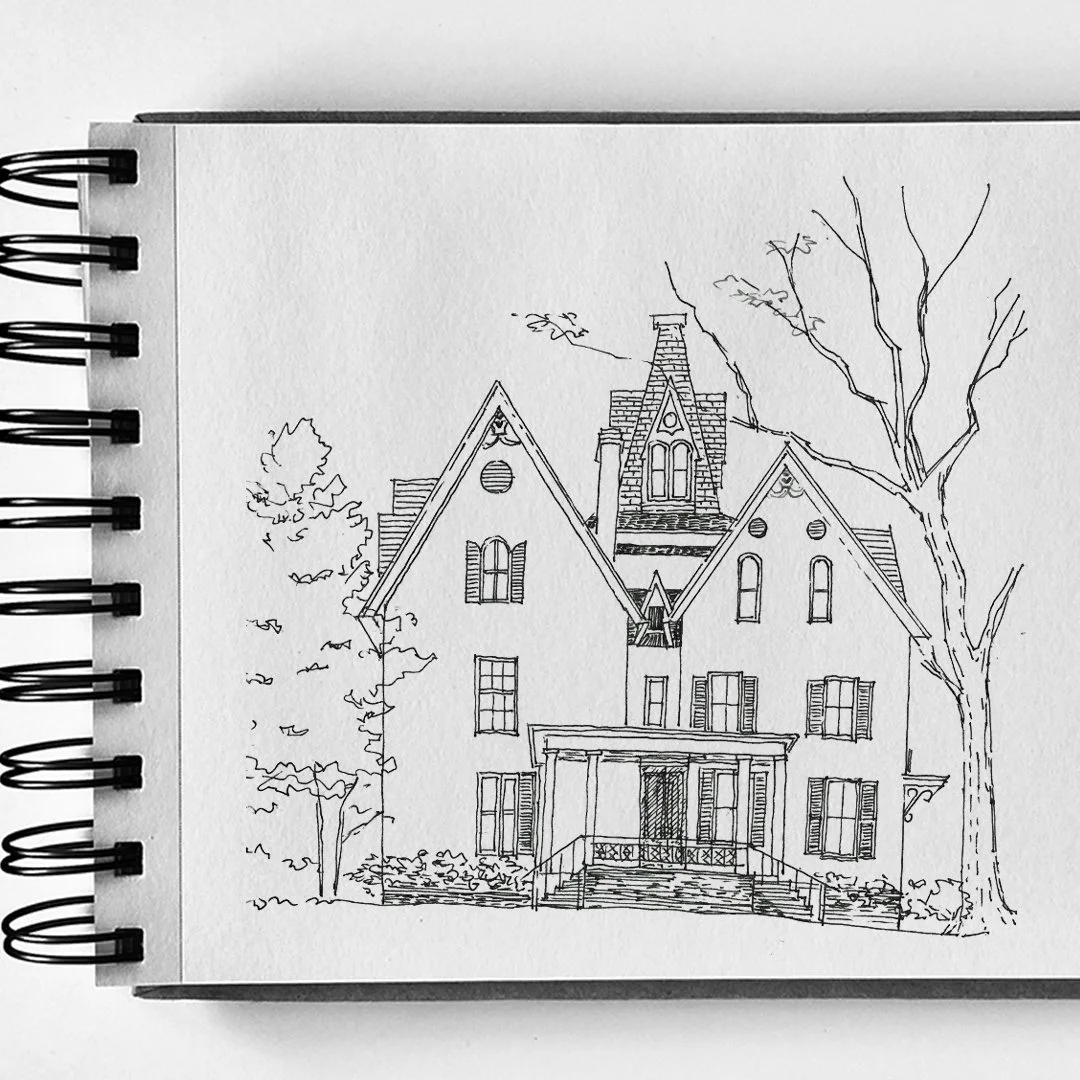Dear Tiffany:
Did I tell you one of my hobbies is to watch people discussing their neighborhoods in a forum? I am not so much into politics, but the forum often reminded me about “Telos”, a term that Aristotle often used to refer to the cause and purpose of a good life.
Aristotle once said that if we want to understand what something is, it must be understood in terms of that end, by which we can discover through social practice or an institutions. Perhaps that are the “Telos” of Montgomery County’s Historic Preservation Commission’s meetings, which I discovered their online recording a year ago and found it quite interesting and educational.
One of their debating on Gothic Revival, an architectural style, caught my attention. Since I had already thrown away all my school notes, I decided to relearn them and refresh my memory.
So where are those Gothic Revival houses now? I asked myself. I began by searching “Gothic Revival Houses near me”, A town called Snow Hill jump on the top of the search. According to Wikipedia, it is a town founded even before the United States. Established by English settlers in 1686, Snow Hill was named after a neighborhood in the city of London, similar to Notting Hill in Western London. With a population of about two thousand people, Snow Hill functions as a satellite town of Salisbury City in Wicomico County.
The image above is a Gothic Revival style house located in Snow Hill, Maryland. It obtains all the Gothic feature you could easily spot. Such as pointed window, asymmetrical floor plan, steeply pitched gables, and decorative tracery etc.
Oh, last but not least, if you enjoy movies, don’t forget to treat yourself to some Classic American films on the weekends. You might be pleased to find out Snow Hill in one of the scenes of the 1999 movie “Runaway Bride”.
Your affectionate freind,
Hepburn
By the way, here are my study notes:
Gothic Revival first thrived in the United Kingdom during the mid-18th century.
One of their well-known Gothic Revival houses was the home of Sir Horace Walpole at Strawberry Hill. Since then, many scholars have critiqued such style through their works. John Ruskin (1819-1900) was one of the influential figures in this trend. His book, Victorian Gothic Revival, outlined principles of design of European Gothic architecture. He believed that Gothic guilds were a rejection of mechanization and an appreciation for handmade craftsmanship.
American builders began to import British Gothic Revival elements into their projects during the 19th century. 1840-1880 was the period that Gothic Revival became prominent throughout the United States. Many renowned architects associated their designs with Gothic Revivals, from as early as Alexander Jackson Davis’ Lyndhurst country estate in New York to James Gamble Rogers' Yale University in Connecticut.
After architect Alexander Jackson Davis's success on the Lyndhurst estate, builders began to sport Gothic details on their projects. Besides commonly known elements such as steep pinnacle roofs, decorative window moldings, and elaborated leaded glass, Gothic-style ornament also reflected on the factory-made bargeboards. A highly decorated house, for example, the Roseland Cottage, would be considered the highlight of the era.
You can see those architecture features in the sketches below. It is a gothic style home located just outside of the Historical Hagerstown.
this is another Gothic Style Home located in Hagerstown MD. Unlike the Gothic Style house mentioned in the article, this house has fairly symetrical volumn and its front porch is designed like a grand entrance leading to the house which is more popular during its vonacular phase. .
These Gothic Revival houses share many of the following characteristics, such as:
Pointed window with decorative tracery
Grouped chimney
Battlement and shaped parapet
Quatrefoil and clover-shaped window
Oriel window
Asymmetrical floor plan
Steeply pitched gables
Last edited: 10/1/2025



